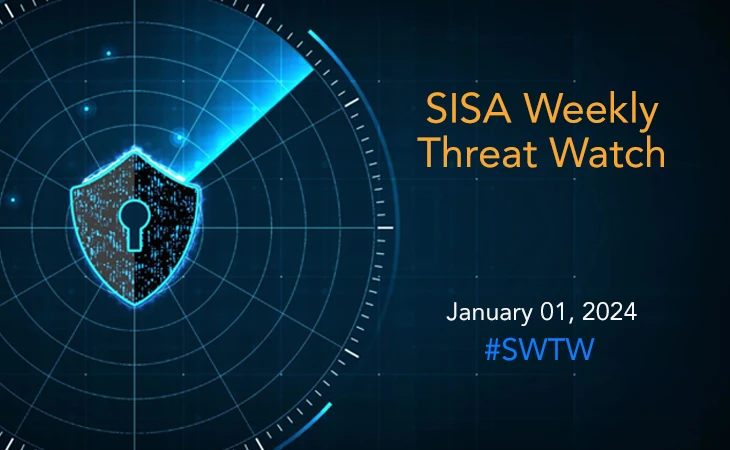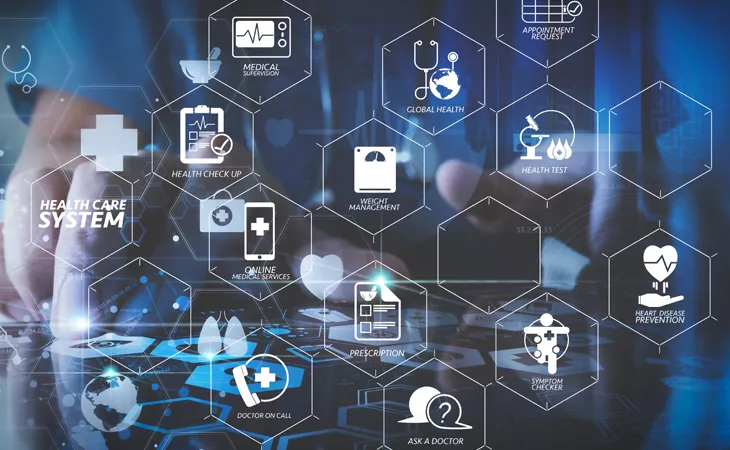Exclusive Insights
- The Critical Role of Managed Compliance in the Evolving Digital Payments Landscape
- The Rise of AI: A New Era in Cybersecurity Resilience
- Redefining Cybersecurity in a Fragmented Landscape: The Case for MXDR
- Cybersecurity Predictions and Trends for 2024
- Securing Tomorrow: Asia’s Digital Payment Transformation and the Road to 2024
- An American healthcare MNC strengthened its data security policy by integrating SISA Radar with DLP solutions
- SISA’s forensics-driven MDR solution helps Club Prophet improve monitoring of workloads on Google Cloud Platform
- SISA ProACT’s cloud-based MDR solution helps neobank improve real-time threat detection and response
- SISA helps a global cloud-based solutions provider mitigate IoT device vulnerabilities
Knowledge Lounge » Protecting Personal Data in the Digital Age: The Role of PETs and Data Classification
Protecting Personal Data in the Digital Age: The Role of PETs and Data Classification
Share on

The safeguarding of sensitive data from unauthorized access, theft, and breaches is paramount to organizations in today’s digital age. Privacy regulations, such as General Data Protection Regulation (GDPR) and California Privacy Rights Act (CPRA), mandate that organizations take appropriate measures to protect personal data. Failure to comply can result in significant penalties and reputational damage. Organizations can leverage privacy enhancing technologies (PETs) and data classification tools to comply with these regulations and protect sensitive data.
PETs are technologies and techniques that reduce or minimize the amount of personal data shared or disclosed, enabling individuals to control their personal information and reduce the risk of data breaches or misuse. PETs are essential in various settings, including healthcare, finance, and e-commerce.
Here are some important examples of how PETs can be used to address data security and privacy concerns:
- Anonymization: PETs can protect privacy by removing identifying information from personal data, making it difficult to trace back to the individual. This can be useful when organizations need to share data for research purposes but must protect individuals’ privacy.
- Differential privacy: This technique adds noise to data to protect individuals’ privacy. It enables organizations to collect and analyze data without revealing individuals’ identities or sensitive information.
- Homomorphic encryption: This technique allows data to be encrypted while still usable. It is helpful when sensitive data must be stored in the cloud or shared with third parties.
- Privacy-preserving data sharing: PETs can enable secure data sharing without compromising individuals’ privacy. This is useful in healthcare settings where medical data must be shared between healthcare providers and protected to comply with privacy regulations.
Another important use case for PETs is in financial institutions. These organizations handle large amounts of sensitive data, including personal and financial information such as social security numbers, bank account numbers, and card numbers. PETs such as encryption and tokenization can help to protect this data, preventing it from falling into the wrong hands.
Data classification is the process of categorizing data based on its sensitivity or importance, enabling organizations to identify and protect sensitive data more effectively, reducing the risk of data breaches or misuse. Data classification is crucial for compliance with data protection regulations such as GDPR and CPRA.
Here are some important examples of how data classification tools can be used to address data security and privacy concerns:
- Identifying sensitive data: Data classification tools can be used to identify and ensure it is protected accordingly. This can be helpful when organizations handle large volumes of data and must prioritize their protection efforts.
- Access control: Data classification tools can enable access control based on data sensitivity, ensuring that only authorized personnel can access sensitive data and reducing the risk of data breaches.
- Data retention: Data classification tools can be used to develop a data retention policy that ensures data is kept only for as long as necessary, reducing the risk of data breaches caused by storing data for longer than required.
- Incident response: Data discovery & classification tools can be integrated to develop an incident response plan that outlines the steps to take in the event of a data breach. This enables organizations to respond quickly and effectively to minimize the impact of a breach and identify whose data are breached and notify them.
In conclusion, PETs and data classification tools are essential for addressing data security and privacy concerns. These tools enable organizations to protect personal data, comply with data protection regulations, and reduce the risk of data breaches or misuse. By using PETs and data classification together, organizations can take a proactive approach to data protection and privacy, which can lead to improved customer trust, reputation, and business success.
As the importance of data privacy and security continues to grow, we can expect to see more innovative PETs and data classification tools to address new challenges.
Exclusive Insights
- The Critical Role of Managed Compliance in the Evolving Digital Payments Landscape
- The Rise of AI: A New Era in Cybersecurity Resilience
- Redefining Cybersecurity in a Fragmented Landscape: The Case for MXDR
- Cybersecurity Predictions and Trends for 2024
- Securing Tomorrow: Asia’s Digital Payment Transformation and the Road to 2024
- An American healthcare MNC strengthened its data security policy by integrating SISA Radar with DLP solutions
- SISA’s forensics-driven MDR solution helps Club Prophet improve monitoring of workloads on Google Cloud Platform
- SISA ProACT’s cloud-based MDR solution helps neobank improve real-time threat detection and response
- SISA helps a global cloud-based solutions provider mitigate IoT device vulnerabilities
 USA
USA India
India APAC
APAC Middle East
Middle East Rest of the Countries
Rest of the Countries

 Facebook
Facebook Linkedin
Linkedin  Youtube
Youtube








